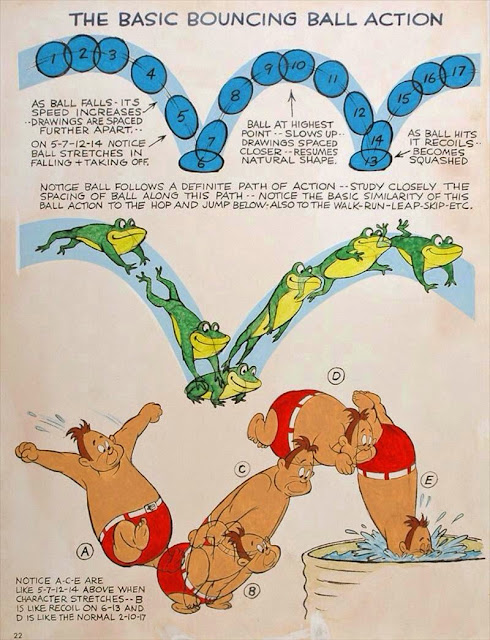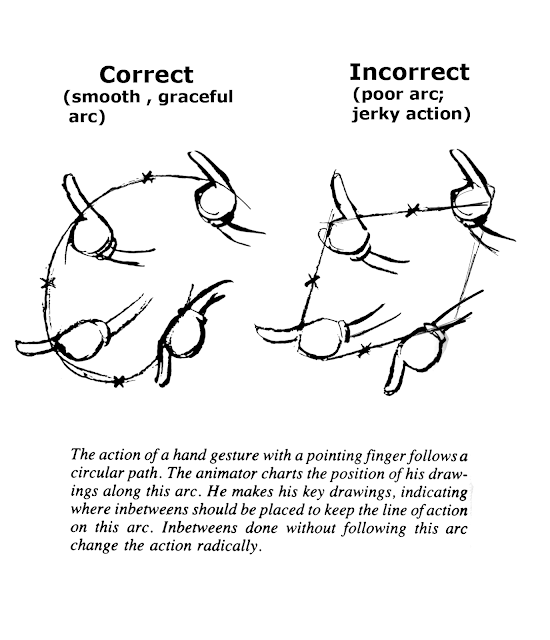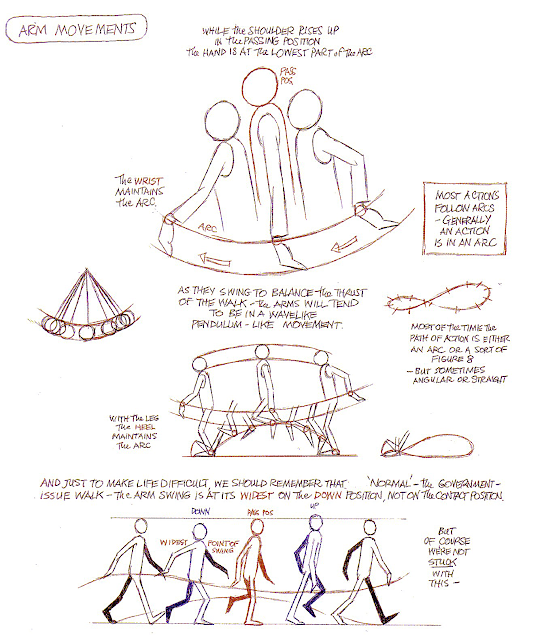All actions, with few exceptions (such as the animation of a mechanical device or purposely "jerky" action for comic effect), follow an arc or slightly circular path. This is especially true of the human figure and the action of animals. Arcs give animation a more natural action and better flow. Think of natural movements in the terms of a pendulum swinging. All arm movement, head turns and even eye movements are executed on an arcs.
Of course, you learned about ARCS in their most basic form when you first animated a Bouncing Ball -
A non-sentient object like a rubber ball that is dropped or thrown will follow specific arcs , the arcs becoming less and less broad as the object loses momentum and energy , finally coming to a stop .
But the same principles (Arcs, squash & stretch, etc.) are seen when you animate a sentient character moving, such as these examples from Preston Blair's book on Animation -

And this example of a rabbit hopping from "The Illusion of Life" by Frank Thomas and Ollie Johnston:

Or the famous animation exercise of animating a simple 'flour sack' coming alive and moving around -

The ARCS must be true for this sort of action to look right .
Another example from "The Illusion Of Life" shows what happens if the correct ARC is not followed (also covered in "The Animator's Survival Kit" page 90 - 92) -

If your ARCS are not correct then your animation will bump and jerk around , instead of flowing smoothly and naturally.
Look at the natural ARCS on Elmer the Elephant's trunk swinging , and in general on his walk -
Again, this example from "Magician Mickey" shows wonderful use of graceful ARCS on Mickey's arm and hand movements and the arcs on the cloth (not to mention the great follow-through and overlap on the cloth , squash & stretch , etc.) -
On Walks the Leg/Foot and Arm/Hand movements follow definite ARCS -




No comments:
Post a Comment
Note: Only a member of this blog may post a comment.